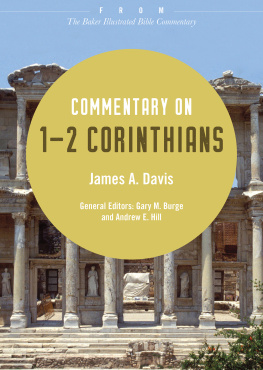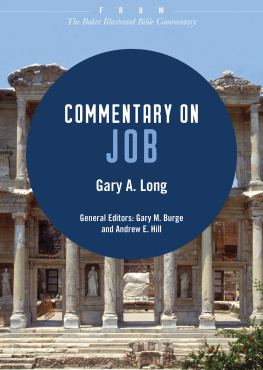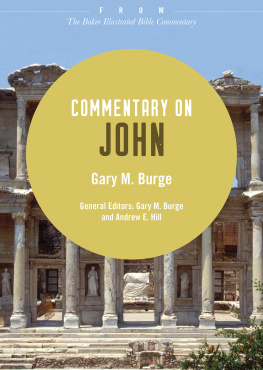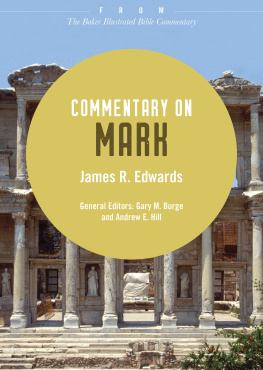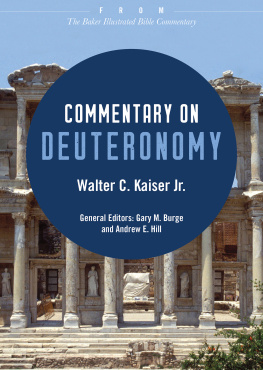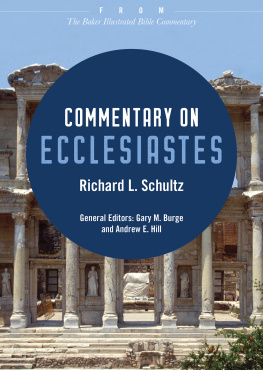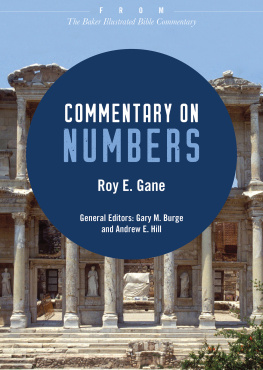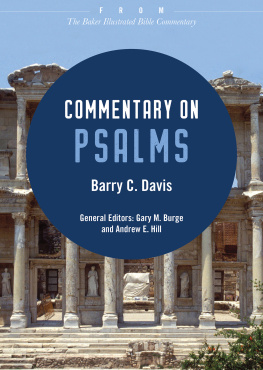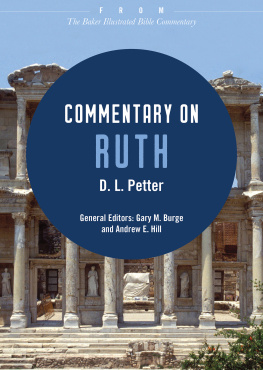Copyright Page
2012 by Baker Publishing Group
Published by Baker Books
a division of Baker Publishing Group
P.O. Box 6287, Grand Rapids, MI 49516-6287
www.bakerbooks.com
Ebook short created 2019
Previously published in The Baker Illustrated Bible Commentary edited by Gary M. Burge and Andrew E. Hill in 2012
All rights reserved. No part of this publication may be reproduced, stored in a retrieval system, or transmitted in any form or by any meansfor example, electronic, photocopy, recordingwithout the prior written permission of the publisher. The only exception is brief quotations in printed reviews.
Library of Congress Cataloging-in-Publication Data is on file at the Library of Congress, Washington, DC.
ISBN 978-1-4934-2469-6
Unless otherwise indicated, Scripture quotations are from the Holy Bible, New International Version. NIV. Copyright 1973, 1978, 1984, 2011 by Biblica, Inc. Used by permission of Zondervan. All rights reserved worldwide. www.zondervan.com. The NIV and New International Version are trademarks registered in the United States Patent and Trademark Office by Biblica, Inc.
Scripture quotations labeled ESV from The Holy Bible, English Standard Version (ESV), copyright 2001 by Crossway, a publishing ministry of Good News Publishers. Used by permission. All rights reserved. ESV Text Edition: 2007
Scripture quotations labeled NASB are from the New American Standard Bible, copyright 1960, 1962, 1963, 1968, 1971, 1972, 1973, 1975, 1977, 1995 by The Lockman Foundation. Used by permission. www.lockman.org
Scripture quotations labeled NIV 1984 are from the HOLY BIBLE, NEW INTERNATIONAL VERSION. NIV. Copyright 1973, 1978, 1984 by International Bible Society. Used by permission of Zondervan. All rights reserved.
Scripture quotations labeled NJPS are from the New Jewish Publication Society Version 1985 by The Jewish Publication Society. All rights reserved.
Scripture quotations labeled NKJV are from the New King James Version. Copyright 1982 by Thomas Nelson, Inc. Used by permission. All rights reserved.
Scripture quotations labeled NLT are from the Holy Bible , New Living Translation, copyright 1996, 2004, 2007 by Tyndale House. Used by permission of Tyndale House Publishers, Inc., Carol Stream, Illinois 60188. All rights reserved.
Scripture quotations labeled NRSV are from the New Revised Standard Version of the Bible, copyright 1989, by the Division of Christian Education of the National Council of the Churches of Christ in the United States of America. Used by permission. All rights reserved.
Scripture quotations labeled RSV are from the Revised Standard Version of the Bible, copyright 1952 [2nd edition, 1971] by the Division of Christian Education of the National Council of the Churches of Christ in the United States of America. Used by permission. All rights reserved.
Unless otherwise indicated, photos, illustrations, and maps are copyright Baker Photo Archive.
Contents
Abbreviations
| ANET | Ancient Near Eastern Texts Relating to the Old Testament . Edited by J. B. Pritchard. 3rd ed. Princeton, 1969 |
| BDAG | Bauer, W., F. W. Danker, W. F. Arndt, and F. W. Gingrich. Greek-English Lexicon of the New Testament and Other Early Christian Literature. 3rd ed. Chicago, 1999 |
| ca. | circa (about, approximately) |
| cf. | compare |
| chap(s). | chapter(s) |
| COS | The Context of Scripture . Edited by W. W. Hallo. 3 vols. Leiden, 1997 |
| e.g. | for example |
| ESV | English Standard Version |
| HALOT | Koehler, L., W. Baumgartner, and J. J. Stamm. The Hebrew and Aramaic Lexicon of the Old Testament. Translated and edited under the supervision of M. E. J. Richardson. 5 vols. Leiden, 19942000 |
| HCSB | Holman Christian Standard Bible |
| i.e. | that is |
| KJV | King James Version |
| NASB | New American Standard Bible |
| NEB | New English Bible |
| NET | New English Translation |
| NIV | New International Version (2011 edition) |
| NIV 1984 | New International Version (1984 edition) |
| NJB | New Jerusalem Bible |
| NJPS | The Tanakh: The Holy Scriptures: The New JPS Translation according to the Traditional Hebrew Text |
| NKJV | New King James Version |
| NLT | New Living Translation |
| NRSV | New Revised Standard Version |
| RSV | Revised Standard Version |
| TDOT | Theological Dictionary of the Old Testament . Edited by G. J. Botterweck and H. Ringgren. Translated by J. T. Willis, G. W. Bromiley, and D. E. Green. 8 vols. Grand Rapids, 1974 |
| TNIV | Todays New International Version |
12 Corinthians
James A. Davis
Introduction
Among the letters of Paul, 1 and 2 Corinthians are perhaps most notable for their practical content and personal style. The first of these two features emerges as a consequence of the vital and often volatile nature of life in the church at Corinth. For it is certain that the practical questions that largely occupy the apostle in both epistles arise not at his initiative but rather at the insistence of his converts. It is in response to their circumstances and backgrounds that the practical and sometimes pointed counsel of these letters originates. The distinctly personal style of both is also largely, if not wholly, a product of the apostles relationship to the church, and so, for that matter, are many of the stylistic peculiarities that have raised questions about the unity and integrity of 2 Corinthians. Thus it is necessary for the interpreter of these epistles to come to know, insofar as that is possible, the history of the circumstances that form the background to Pauls Corinthian correspondence.
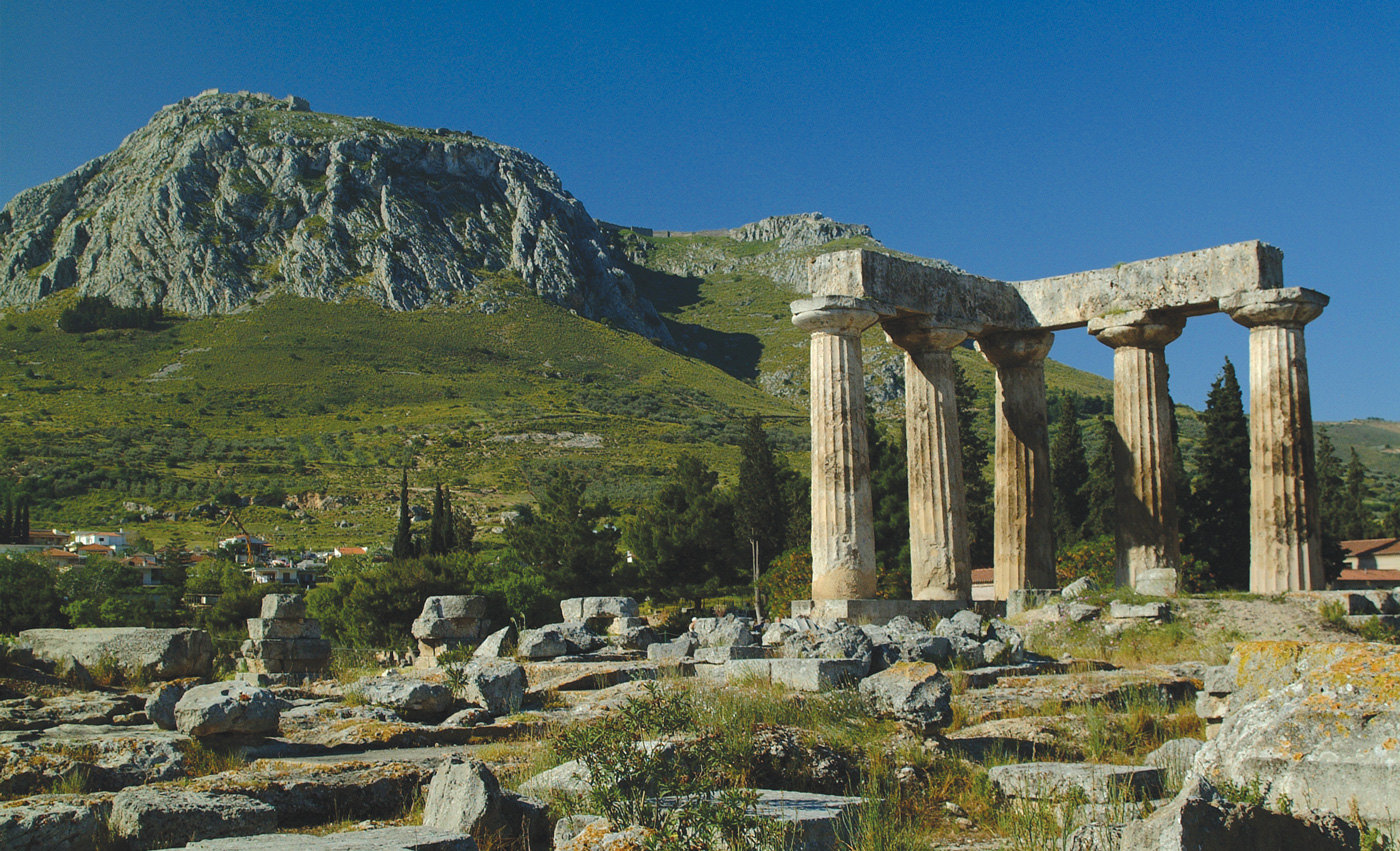
Historical Background
The ancient history of the city of Corinth may, for the sake of convenience, be divided into four principal periods: the preclassical period (ca. 35001350 BC), the classical period (ca. 1350338 BC), the Hellenistic period (338146 BC), and the Roman period (146 BCAD 395). For our purposes, we need concern ourselves with only a few of the major events in the last of these four historical periods. In 146 BC a Roman army burned the ancient city of Corinth to the ground for its participation and leadership in the rebellion of the Achaian League (a group composed of the principal city-states located in Achaia, the southern peninsula of Greece). At that time, many of the citizens of Corinth were either killed or sold into slavery, and for a century afterward the city lay derelict.
In the year 44 BC, however, the city was refounded on the order of Julius Caesar, who sought to redeem the strategic and economic potential of the site with a new colonial population made up of freedmen (manumitted Roman slaves), army veterans, and former residents. Because of its location, near the narrowest part of the isthmus connecting Macedonia (the northern mainland of Greece) and Achaia, and because of the hazards associated with sea travel, particularly in the winter, when the possibility of conveying cargo across the narrow isthmus must have appeared as an exceedingly attractive alternative, the city quickly regained its former prosperity. Under Augustus in 27 BC it was made the capital of the senatorial province of Achaia.

